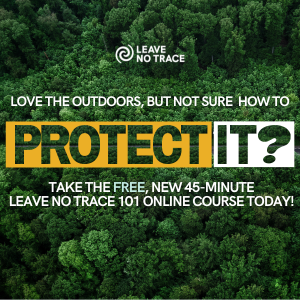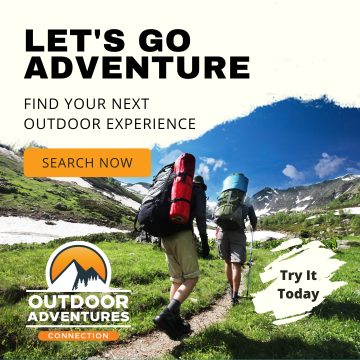
As the calendar flips to a new year, the promise of new opportunities and experiences comes with it. For outdoor enthusiasts, this is the perfect time to start planning adventures that will define 2025. Whether it’s hiking through remote trails, kayaking along quiet waterways, or camping under starlit skies, early preparation is key to making these aspirations a reality.
Why Planning Matters
Outdoor adventures, while exhilarating, come with logistical challenges. Trail permits, campsite reservations, and equipment availability are limited in many popular destinations, often filling up months in advance. National parks like Yosemite or Yellowstone, for instance, typically require wilderness permits for backcountry hiking, which are issued on a lottery basis or limited quota.
Planning now can secure your place in these coveted experiences while allowing for thoughtful preparation. It also gives you the opportunity to map out personal goals—whether it’s summiting a challenging peak, mastering a new skill like fly fishing, or simply committing to spend more time outside.
Evaluate Your Goals and Skill Level
The first step in planning an outdoor adventure is identifying what kind of experience you’re seeking. Are you looking for a physically demanding trip, like climbing a Fourteener in Colorado, or a more relaxed escape, like exploring a scenic stretch of coastline? Understanding your goals will help you decide on destinations, activities, and timelines.
It’s equally important to assess your current skill level and physical readiness. Some adventures, like multi-day backpacking trips or whitewater rafting excursions, may require training or skill-building in advance. Use the first few months of the year to enroll in a wilderness first aid course, brush up on navigation techniques, or build endurance through consistent workouts.
Build Your Gear Inventory
Outdoor activities often demand specific gear, and having the right equipment can make or break your trip. Early planning allows time to inventory what you already have and identify what’s missing. Key gear categories to consider include:
- Clothing: Check your base layers, weather-resistant outerwear, and hiking boots for wear and tear.
- Shelter: Inspect your tent, sleeping bag, and sleeping pad for damage.
- Navigation Tools: A map, compass, and GPS device are essential for any trip that takes you off the beaten path.
- Emergency Supplies: A first-aid kit, headlamp, and portable water filter should be in every adventurer’s pack.
Shopping during the off-season may also allow you to take advantage of sales or discounts on high-ticket items. Additionally, consider sustainability by borrowing or renting gear that you may only use occasionally.
Research Destinations
For many outdoor enthusiasts, the hardest part of planning an adventure is deciding where to go. Start by researching potential destinations that align with your interests and goals. Consider factors like the best seasons to visit, required permits, and current travel advisories. Many parks and wilderness areas provide detailed online resources to help visitors plan their trips, from suggested itineraries to safety guidelines.
Don’t overlook lesser-known locations. While places like the Grand Canyon or Banff National Park are awe-inspiring, they’re also heavily trafficked. Seeking out less-popular trails or wilderness areas can provide a quieter, more immersive experience. States like Idaho, Maine, or Arkansas, for example, offer a wealth of outdoor opportunities that fly under the radar compared to larger, better-known destinations.
Secure Permits and Reservations
One of the most time-sensitive tasks is applying for permits or making reservations. National and state parks often require advance planning for activities like backcountry camping, rafting, or climbing. Popular campsites and lodges can sell out months in advance, especially during peak season.
Check reservation systems like Recreation.gov or the website of the destination you’re interested in to understand their policies and availability. For international trips, ensure you have a valid passport and research any additional entry requirements for the countries you’re visiting.
Develop a Training and Preparation Plan
For physically demanding trips, preparation goes beyond gear and logistics. If you’re planning to hike the John Muir Trail or complete a long-distance cycling tour, start training now to ensure your body is ready. Building strength and endurance takes time, and incorporating activities like running, swimming, or climbing into your routine can help you gradually build the fitness needed for your adventure.
If you’re taking on an activity you’re less familiar with, like backcountry skiing or rock climbing, invest in professional instruction or guided experiences. Many outfitters offer lessons and workshops designed to teach both the technical skills and safety protocols required for these pursuits.
Embrace Flexibility
While planning is important, outdoor adventures rarely go exactly as envisioned. Weather conditions, trail closures, or unexpected setbacks can alter even the most carefully laid plans. Keep a flexible mindset, and consider creating a backup itinerary in case your original plans need to change.
Flexibility also means leaving space in your schedule for spontaneity. Some of the best moments in the outdoors—whether it’s stumbling upon a hidden waterfall or watching an unexpected meteor shower—can’t be planned.
Make Time for Microadventures
Not every outdoor experience needs to be a weeklong expedition. Building smaller “microadventures” into your schedule throughout the year is a great way to stay connected with nature, even when time is tight. Day hikes, overnight camping trips, or even an early-morning paddle on a nearby lake can provide the same mental and physical benefits as longer outings.
Use these shorter trips to test new gear, refine your packing process, or explore local destinations you’ve never visited before. These experiences can also serve as stepping stones to more ambitious adventures.
Final Thoughts and Call to Action
Starting the year with a solid plan for outdoor adventures ensures that you’ll spend more time exploring and less time scrambling to make arrangements. The natural world offers endless possibilities for discovery, growth, and connection. By setting goals, researching destinations, and preparing thoughtfully, you can create a year filled with meaningful outdoor experiences.
For more tips on planning your next outdoor adventure, reviews on the latest gear, and information on adventure providers, visit the Outdoor Adventures Connection website at www.outdooradventures.pro. Whether you’re seeking inspiration for your next trip or practical advice to make it happen, our platform is here to help you get outside and explore. Start your adventure today.

.png)

-(2).png)


.png)


.png)





-(1140-×-106-px).png)
.jpg)
Leave Comment Below